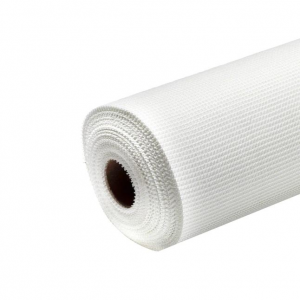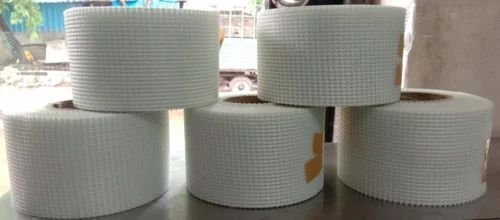A plastered wall can be virtually indistinguishable from one covered with drywall until cracks appear. In drywall, cracks tend to follow the joints between drywall sheets, but in plaster, they can run in any direction, and they tend to appear more frequently. They occur because plaster is brittle and can't withstand movements in the framing caused by moisture and settling. You can repair these cracks using either plaster or drywall joint compound, but they will keep coming back if you don't tape them first. Self-adhesive fiberglass mesh is the best tape for the job.
1.Rake over the damaged plaster with a paint scraper. Don't use the tool to scrape – simply draw it over the damage to remove loose material, which should fall out on its own.
2.Unroll enough self-adhesive fiberglass mesh tape to cover the crack, If the crack curves, cut a separate piece for each leg of the curve – don't try to follow a curve by bunching up a single piece of tape. Cut the tape as needed with scissors and stick it to the wall, overlapping pieces as needed to cover the crack.
3.Cover the tape with plaster or drywall joint compound, Check the container – if you use plaster – to determine whether or not you should wet the wall before applying it. If the instructions specify that you do need to moisten the wall, do it with a sponge soaked in water.
4.Apply one coat of plaster or drywall joint compound over the tape. If you use joint compound, spread it with a 6-inch drywall knife and scrape the surface lightly to flatten it. If you use plaster, apply it with a plastering trowel, laying it overt the tape and feathering the edges into the surrounding wall as well as possible.
5.Apply another coat of joint compound after the first one dries, using an 8-inch knife. Smooth it on and scrape off the excess, feathering the edges into the wall. If you're using plaster, apply a thin layer over the previous one after it has dried to fill holes and voids.
6.Apply one or two more coats of joint compound, using a 10- or 12-inch knife. Scrape the edges of each coat carefully to feather them into the wall and make the repair invisible. If you're doing the repair with plaster, you shouldn't have to apply any more after the second coat has dried.
7.Sand the repair lightly with a sanding sponge once the plaster or joint compound has set. Prime the joint compound or plaster with polyvinyl acetate primer prior to painting the wall.


Post time: Mar-07-2023